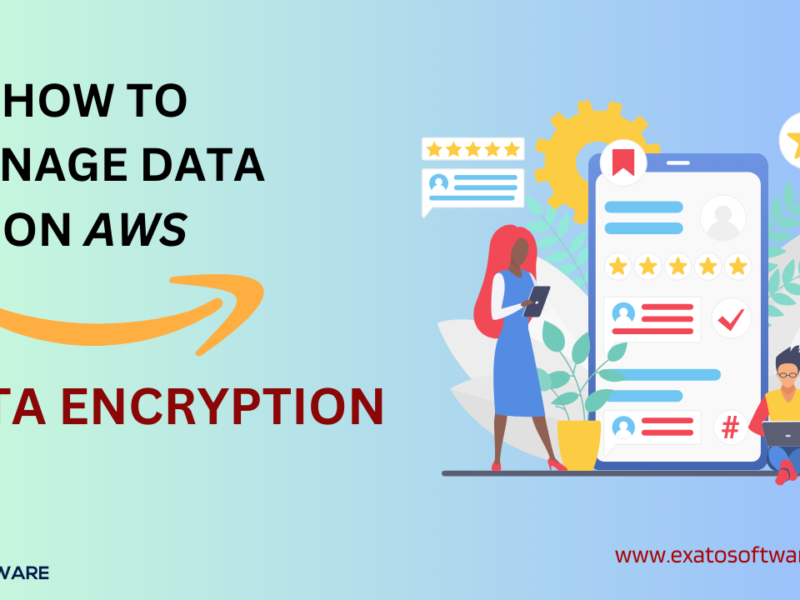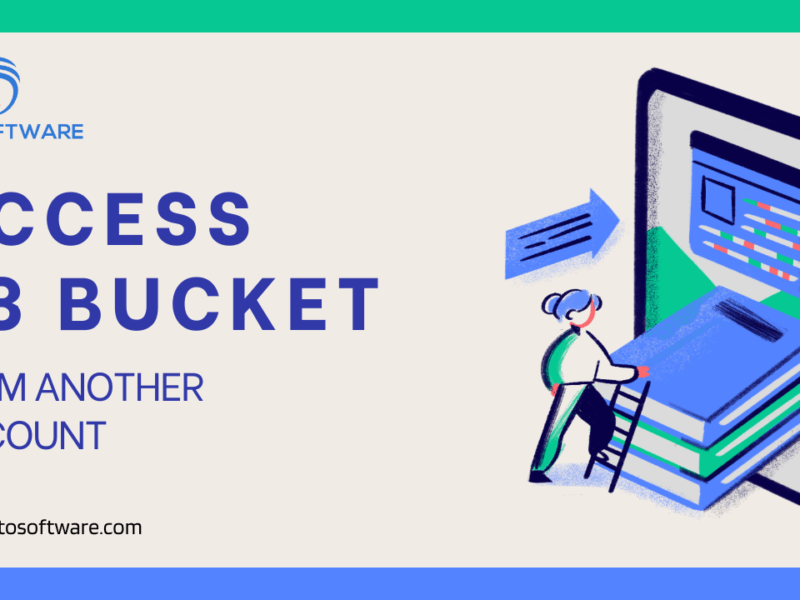Cloud computing can assist you with handling and dissecting your big data quicker, resulting in insights that can work on your products and business.
The headway of technology has permitted organizations to receive the rewards of smoothed-out processes and cost-effective tasks. However, there’s one feature that has brought many advantages to organizations irrespective of size is the availability and reachability of data from every internet-backed computing device under the sun, be it sensors, social media, business applications, and more.
These big stores of knowledge that bombard organizations every day of the week are overall known as big data. Most have known about it, many shall expand its capability to impel their business forward, but, just some have genuinely prevailed with regards to doing as such.
Projects have simultaneously adopted cloud computing solutions to advance their IT duties and promote better Software, quicker
Consolidating big data with cloud computing is a tremendous blend that can transform your organization.
In this article, we examine the essential qualities of massive data and put forth a defense for placing your data in cloud computing. We likewise re-evaluate the upsides and downsides of taking such an action to set you up for your big data relocation. We should always go!
Read Also: Which is best in cloud computing and large data analysis?
Pros of placing big data within the cloud
The shift to big data within the cloud isn’t shocking considering the many advantages that the amazing blend of big data analysis and cloud computing solutions can bring. Here are the key benefits.
Requires zero CAPEX
The cloud has on a really basic level transformed IT spending as far as organizations might be concerned—and positively.
As we previously mentioned, big data initiatives demand extensive infrastructure, which typically entails large on-premise capital consumption (CAPEX) expenses. Be that because it may, the cloud’s Infrastructure-as-a-Service models have permitted organizations to essentially eliminate their greatest CAPEX costs by moving these into the operating expenditure (OPEX) column. So once you want to set up your data set servers or data distribution centers, you’ll not have to make big forthright projects.
This has been perhaps the foremost convincing benefit that has persuaded organizations to relocate to the cloud.
Empowers quicker scalability
Big volumes of both organized and unstructured data require extended handling force, and stockpiling, and that is only the tip of the iceberg. The cloud gives promptly accessible infrastructure but additionally the capacity to scale this framework rapidly so you can oversee big spikes in rush hour gridlock or utilization.
Brings down the value of analysis
Mining big data with the assistance of the cloud has made data analysis more cost-efficient. Notwithstanding the decrease of on-premise infrastructure, you’ll likewise save money on costs identified with framework repair and updates, energy utilization, and office management, which are just the beginning. You are doing not have to worry about the technical parts of managing big data and attention should be given on creating and offering experiences. The pay-more-only as costs increase paradigm used by cloud computing is far superior because it is less resource- and cost-inefficient.
Empowers a deft and inventive culture
The capacity to enhance is an attitude that ought to be developed inside any undertaking. This type of culture can encourage the use of inventive methods of using big data to get a competitive position in the market. At the purpose when your motto is to analyze data as rather than manage servers and databases, you’ll easily and efficiently uncover experiences that can help you to increase product offerings, aid operational efficiency, and improve customer care.
Empowers better business congruity and debacle recuperation
In instances of digital assaults, blackouts, or gear disappointment, conventional data recuperation procedures will presently aren’t getting the job done. The errand of repeating a server farm – with copy stockpiling, servers, organizing hardware, and other frameworks – in anticipation of a calamity is dreary, troublesome, and dear.
Furthermore, inheritance frameworks regularly take extremely long to copy and re-establish. This is often particularly evident in the time of big data when data stores are so big and sweeping.
Having the info put away in a cloud framework will permit your organization to recuperate from fiascos quicker, during this manner guaranteeing proceeds with admittance to data and imperative big data experiences.
Possible difficulties of massive data in the cloud
Relocating big data to the cloud presents different obstacles. Overcoming these issues needs coordinated efforts from IT leaders, C-suite managers, and other business stakeholders. Here are some of the significant difficulties of Big Data Cloud computing Solutions.
Less power over security
These big datasets contain sensitive data like locations of people, MasterCard details, federal retirement support numbers, and other similar data. Guaranteeing that this data is kept secure is of fundamental significance. Data breaks could mean genuine punishments under different guidelines and a discolored organization brand, which may prompt the loss of clients and income.
Read Also: sorts of Challenges and Solutions in Big data
Less power over compliance
Compliance is another issue that organizations need to think of while transferring all the data to the cloud.
Cloud service-providing organizations are usually in compliance with different guidelines like HIPAA, and PCI. Here, you do not have full control over your data’s compliance requirements. Regardless of whether your CSP is dealing with decent guidelines of compliance, you want to make sure that you know the answers to the following queries:
Where is the data going to be kept?
What data guidelines do I’ve have to comply to? Etc.
Organization reliance and idleness issues
The flip side of getting simple availability to data in the cloud is that accessibility of the data is exceptionally dependent on network organization.
1) Identify your essential goal
Beginning a serious data project exclusively to investigate potential outcomes, without an inexpensive target, may be a big exercise in futility, exertion, and resources.
Many undertakings have been taken during this illustration in the most difficult way possible. Accordingly, 85% of massive data projects come up short. That’s crazy.
To improve your probability of progress, you wanted to differentiate the critical objectives and targets you’d prefer to accomplish from your big data projects.
2) Understand your data stockpiling framework needs
The following stage is to comprehend your data and the data set framework needed to store and investigate it. If you’re a 24×7 Helpdesk Services provider, this is often for you.
Your analysis should incorporate the accompanying variables:
The sort of data you will store and examining
How much data you should manage
How rapidly you actually wanted scientific outcomes
SQL versus NoSQL Databases
In the event that the sort of data that you’re putting away and breaking down is essentially efficient and organized, a SQL (organized inquiry language) data set is perhaps the most ideal choice.
3) Find the proper Big Data solutions for your analysis needs
Whenever you’ve done an exhaustive evaluation of how your data should be put away and dealt with, time to choose the apparatuses will allow you to best concentrate scientific bits of knowledge from your data.
Dispersed data stockpiling and handling
Ongoing data observation and input
Amazon kinesis firehose
Making of reports and dashboards
4) understand your security and compliance prerequisites
The more data you’ve got, the more important bits of data you can separate. But, you likewise must be more cautious about ensuring the safety and protection of the entirety of this data.
It’s a clear fact that data breaks can prompt genuine consequences. Putting your clients’ by and by recognizable data in peril can prompt monetary loss, administrative approvals, and reputational harm.
Big data has special security necessities on account of its volume and variety (Big, organized, and unstructured data), scattered capacity (on-reason or cloud), circulated handling (across numerous team hubs), and altered infrastructure and investigation devices.
Public cloud
In a public cloud, one hardware is shared between different organizations, while the full cloud infrastructure is managed and worked by third-person cloud service providers such as Microsoft, Amazon, or Google. The general public cloud’s greatest benefit is its capacity to limitlessly scale infrastructure resources immediately without the requirement for a forthright venture, which can be exceptionally useful as the measure of your data develops. Likewise, utilizing public cloud services permits you to take advantage of the most up-to-date state-of-the-art developments for your analysis drives.
Private cloud
If you actually wanted a more tweaked solution and greater power over your data, a personal cloud may be the most ideal choice for your big data drive.
In this model, your data is in a cloud environment but other organizations cannot use the framework. It is solely for your organization. A personal cloud can either be kept up on-premise or in an outsider server farm.
With personal cloud development, you’ll enjoy full control over the data security practices and you can decide the data management rules. This is able to be worthwhile for security and compliance purposes, however, comes at a more extreme expense and greater service overhead.
Hybrid cloud
Organizations looking for a choice that will provide them with the smartest possible solution as far as adaptability, versatility, security, and cost-productivity can pick a crossbreed cloud climate.
A hybrid cloud joins a public and personal cloud, the 2 of which work autonomously but convey through an organization. You’ll alter your half-breed cloud execution to meet your requirements.
A model use case would store classified data inside your private cloud. It will run insightful questions on less-touch data through a public cloud service.
While hybrid clouds surely give many advantages, they require a more significant level of technical service and organization.
6) Evaluate the cloud suppliers offering Big Data solutions
After you’ve performed stages 1-5. You have a strong thought about what you want to get cloud big data to drive going. Presently a perfect opportunity to choose the cloud merchant that can give you most or all that you require.
Analysis of which sellers offer the devices that you simply really wanted and have executed comparable models that you require. Converse with their clients to more deeply study their fulfillment with their answers. Decide the degree of client assistance you will need and ensure they can give it.
The determination of your cloud specialist co-op is significant, so make time with this stride. If you have cleared steps from 1-5 your progression, in general, is direct.
7) Assemble the proper ability
Building a serious data team may be probably the greatest test you can confront.
To finish your big data team, you’ll in any case have to recruit whatever technical ability you need. Include key individuals to set up a perfect big data team.:
Cloud engineers
Software engineers
Data designers and engineers
Data Researchers
Business examiners
When you assemble your team, ensure they comprehend their obligations in their singular jobs. But in evangelizing data-driven development inside your whole organization.
If that creates this whole team without any training too overwhelming of an assignment. You’ll likewise consider outsider big data managed services. With the proper outsourced data team, you’ll understand ROI quicker. Since you will not need to invest a great deal of energy forthrightly enlisting colleagues. Once you arrive at a steady state with your outsourced team. You’ll keep assembling your in-house team for what’s to come.
8) Implement your solution
Keep your eyes open for new use cases. There are other giant sources of data ready for use for conclusions.



